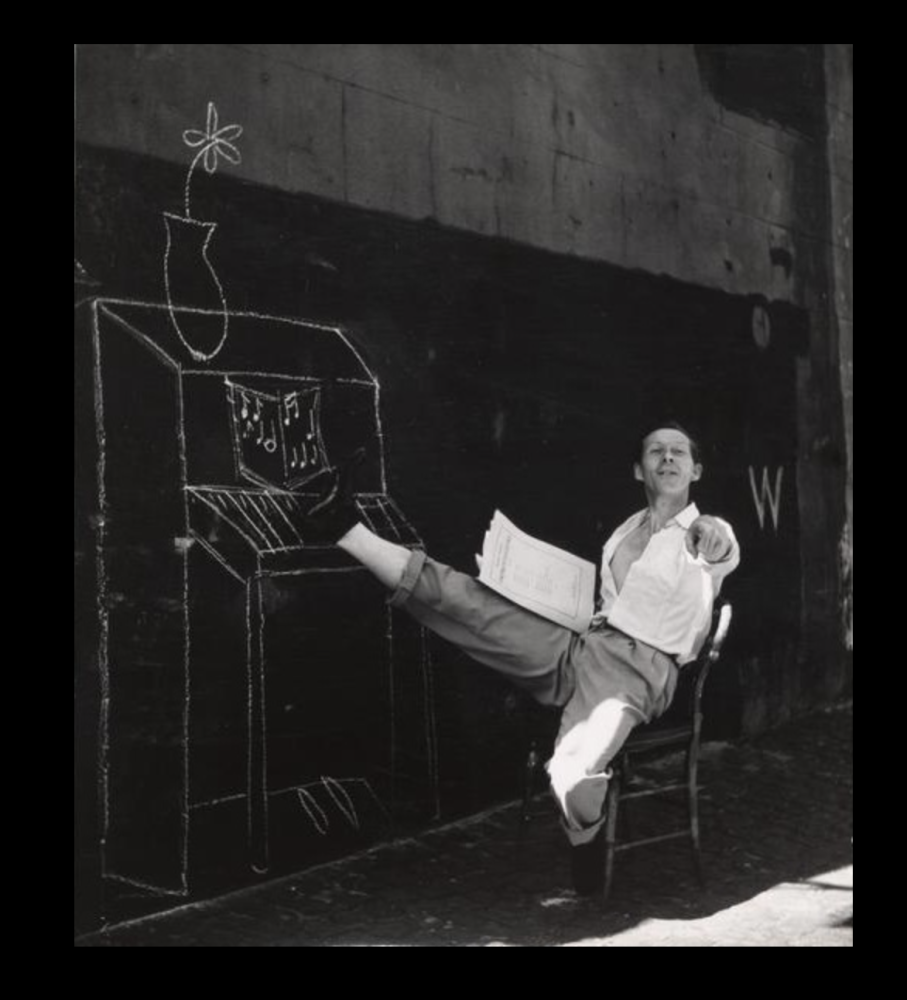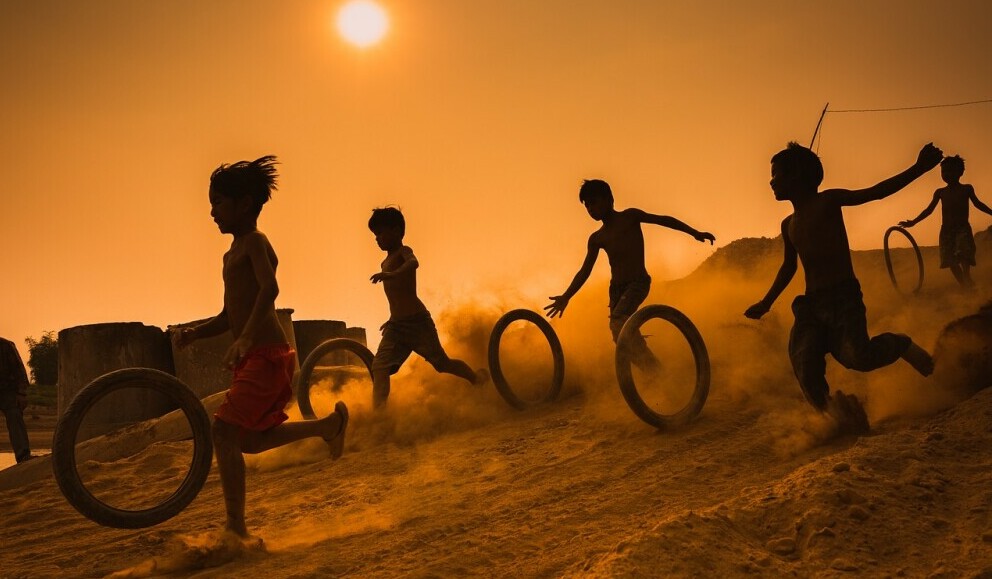Let’s take a look at the life of Walter Gore and Street Games which was his best-known pieces of choreography.
So who was Walter Gore?
He was the choreographer of Street Games which was a one-act Ballet.
Walter Gore was also one of the first male dancers to make a reputation at Marie Rambert’s Ballet Club and one of the best British character dancers of his day.
He created the Rake in De Valois ‘The Rake’s Progress.’

Who Was Walter Gore?
Walter Gore was born into a Scottish theatrical family in 1910. His real name was Robert Taylor. Gore started his early training at the Italia Conti School in 1924, as he wanted to become an actor. He started off as a child actor in Where the Rainbow Ends and A Midsummer Night’s Dream.
He also had some encouragement from Massine but owed most of his training as a dancer and choreographer to Rambert. Gore was a dancer with Ballet Rambert from 1930 to 1935. He returned as a choreographer in 1938 with his first ballet Final Waltz.
In 1944, while he was on leave from Army duty in France, Gore created a ballet based on Benjamin Britten’s Simple Symphony also entitled Simple Symphony for the Ballet Rambert. The work was largely created using Sally Gilmour and Margaret Scott.
He remained at Ballet Rambert until 1950 and then worked occasionally with the Ballets des Champs-Elysées and the Sadler’s Wells Ballet. He founded his own company, The Walter Gore Ballet, in 1953.
He led the Frankfurt Ballet from 1957 to 1959, then became the founder and director of the London Ballet from 1961 to 1963. At that time he also became director of the recently founded Gulbenkian Ballet in Lisbon. He was also the founder and artistic director of the Australian Theatre Ballet in Melbourne.
He has to his credit more than 80 choreographies.
His ballets fall into three main categories, strongly dramatic works like The Night and Silence, Light comedy ballets like Street Games, and ballets of mood.
Although the development of his style suffered from working with too many companies for too short a time, Gore was a prolific and original choreographer and was too little appreciated in the last decade of his life by British Ballet.
Some of his best works were made to celebrate and display the exceptional gifts of his ballerina wife, Paula Hinton whom he met at Ballet Rambert.
In his ballets like Antonia (1948), Night and Silence (1958), Eaters of Darkness (1958), and Sweet Dancer (1964), Gore’s vivid theatrical sense, and Hinton’s expressive powers were to create works of sure impact.
In his last ballets – Embers of Glencoe for the Scottish Ballet and Dance Pictures for London Festival Ballet Gor’s talents were still very present.
It was British Ballet’s tragedy, quite as much as Gore’s, that he should have been so little used at a time when his abilities were sorely needed.
Gore died on 16 April 1979 in Pamplona, Spain.
Walter Gore and Street Games
Street Games is one of Walter Gore’s best-known ballets. The music was done by Jacques Ibert. The scenery and costumes by Ronald Wilson.

This ballet was first performed by the New Ballet Company, Wimbledon Theatre, London on the 11th of November 1952.
The scene is a wharfside stretch of ground near Blackfriars Bridge, London.
To the left is a stylized house with a window and to the right there is a dark wall.
The dancers, as children, prepare to play games.
First, they play hopscotch for the girls followed by rugged for the boys, then skipping for the girls and pas de deux for screen-struck lovers who have just left a cinema.
The boys search for a lost ball which a girl hides.
The games continue with statues, dressing-up, and mock battles linked by the progress of the lovers.
Although Street Games is at least one game too long, it illustrates very well the twists of humor and wry observation which Gore habitually introduced to his comedy ballets, so that humor is sometimes never far from tears.
He was above all an inventor of situations and a commentator on the human state.
This ballet entered the repertory of Western Theatre Ballet, with designs by Andre Francois, soon after that company was formed and owes its place in the English repertory largely to their loving performances.
So now I am sure you know a little more about Walter Gore and Street Games.


This was such an enlightening read! Walter Gore’s life and contributions to ballet are truly fascinating, and I appreciate how you’ve highlighted both his personal journey and his impact on the art form. I didn’t realize how much he influenced British ballet, especially through his character-driven pieces like Street Games.
The way you described Street Games really brought it to life for me. It’s incredible how Gore used the simplicity of children’s play to explore deeper human emotions. The blend of humor with underlying sadness in his choreography sounds like it made for a powerful experience. It’s a shame that Gore wasn’t more widely recognized during the latter part of his career, but it’s heartening to know that his work continues to be appreciated.
The connection between Gore’s ballets and his wife Paula Hinton’s talents adds such a personal touch to his story. It’s clear that their partnership was a significant creative force.
Thank you for sharing this detailed account of Walter Gore’s life and work. It’s given me a new appreciation for the depth and creativity of his contributions to ballet.
Thanks for your comment Kavitha. I appreciate you taking the time and I am glad you enjoyed the article.
Interesting article on Walter Gore and street games!
It’s fascinating to see how Walter Gore’s contributions have influenced the world of ballet with street games. His innovative approach and emphasis on creativity and expression resonate strongly within the dance community. I appreciate the historical context you provided about his impact on the evolution of street games as a ballet.
One aspect I’d love to discuss further is how Gore’s techniques and philosophy have shaped modern street dance styles. Have you noticed any specific street dance trends or elements that can be traced back to his methods? Additionally, how do you think his legacy continues to influence new generations of dancers?
Thanks for shedding light on this important figure and his impact on the world of ballet!
Regards
TWG.The spell of future civilization
Hi and thanks for stopping by. I don’t see a resemblance at all between the ballet Street Games and Modern Street Dance Styles. I think it may have influenced the ballet scene more by encouraging choreographers to look at the more dramatic side of creating a ballet.
Thank you for this fascinating exploration of Walter Gore’s life and his contribution to the world of ballet, particularly with his piece Street Games.
It’s enlightening to learn about how Gore’s work reflected not only his technical skill as a choreographer but also his keen observation of human behavior and emotions.
Street Games seems to encapsulate the bittersweet nature of childhood play, blending humor with subtle undertones of deeper, perhaps more poignant themes.
I’m particularly struck by the notion that Gore was “too little appreciated in the last decade of his life by British Ballet.” It makes me wonder about the broader challenges artists face when their work doesn’t quite align with the prevailing trends or when they work across too many companies, as you mentioned.
How do you think the transient nature of his work with different companies might have influenced the recognition and legacy of his contributions?
Additionally, the way Street Games captures the spirit of childhood through dance is intriguing. Do you think this ballet, with its themes and settings, still resonates with contemporary audiences? How might a modern reinterpretation of Street Games reflect changes in society’s views on childhood and play?
Thanks again for shedding light on this often-overlooked figure in ballet history.
It’s clear that Walter Gore’s contributions, though not always fully recognized in his time, left a lasting impact on the art form.
He left a lasting impression on the ballet world, and I think Street Games could still be relevant today. I think a lot of artists struggle to be recognized, however after they leave this world, that is when they are given the respect they deserve.
Maybe because Walter Gore didn’t stay for long in any one company is why he wasn’t as famous as some of the others who spent most of their lives working for one dance company.